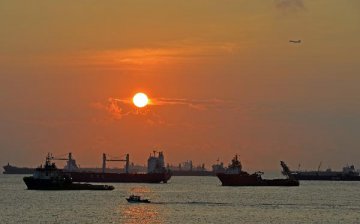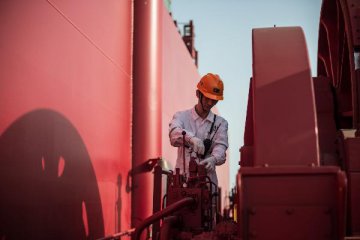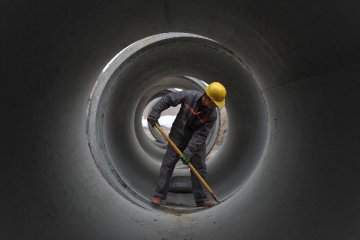
The central state-owned enterprises (SOEs) have taken major moves since the restructuring of China Ocean Shipping (Group) Company and China Shipping (Group) Company at the end of last year.
China International Travel Service Corporation Limited (601888.SH) yesterday announced that it has received a notice from its controlling shareholder, CITS Group Corporation, learning that CITS and China Travel Service (HK) Group Corporation are planning for strategic restructuring. Related scheme has not been determined, and it also needs to be approved by relevant authorities after confirmation. Currently, the company’s major assets restructuring issues are not involved. According to industrial analysis, along with successive issuance of “1+N” policies, the SOEs reform steps into a comprehensive implementation phrase.
The second wave of SOEs reform pilots is likely to initiate.
The media recently reported that related authorities will hold a press conference about “ten reform pilots” of the SOEs soon, and the second wave of SOEs reform pilots is likely to initiate.
Based on introduction of Peng Huagang, deputy secretary general of the State-owned Assets Supervision and Administration Commission (SASAC) of the State Council, substantial steps have been taken to implement major measures for current SOEs reform. On one side, a job to classify the SOEs’ functions has begun to initiate stably, with 17 provincial SASACs and 40 central SOEs proposing related schemes; on the other side, effectiveness of the reform on corporate system and shareholding system has become obvious, with 80 percent of SOEs carrying out systematic shareholding reform nationwide. Corporate governance structure is constantly improving. The central SOEs setting standardized board of directors increased by 11 to 85 totally in 2015.
Previously, China’s two shipping magnates, China Ocean Shipping (Group) Company and China Shipping (Group) Company, chose to restructure so that to make breakthrough. Eight listed companies involved in the said two groups announced to suspend the trading on August 7, 2015, arousing their reform and restructuring. The whole restructuring scheme covered 74 asset transactions with 60 billion yuan, which has been regarded as the most complicated transaction in history of the capital market. After that, China COSCO Holdings Company Limited (601919.SH) becomes a platform for service supply chain of container transportation, covering container shipping and dock businesses; China Shipping Development Company Limited (600026.SH) becomes an oil & gas transportation platform; and China Shipping Container Lines Company Limited (601866.SH) becomes a comprehensive platform providing shipping financial services.
Insiders pointed out that depth and strength will be further reinforced for the SOEs reform this year, “ten pilots” will be fully promoted from points to cover more areas, and merging & restructuring, mixed ownership reform, employee shareholding plan as well as overall listing will be accelerated. Meanwhile, local reform pilots will also be further enhanced into actual operation.
The following reform is expected for the competitive SOEs.
Along with the arriving top design scheme, the SOEs reform is re-accelerating, pointed out Dai Kang, researcher at the Guotai Junan Securities (601211.SH).
Dai believed that the following reform of competitive SOEs deserves the most attention. They will play a leading role in the future reform process. The SOEs responsible for public and social welfare require state-owned monopoly. But the competitive SOEs do not need absolute state control, more tolerating to reform depth and width, and their reform schemes are more operable. Especially, the competitive SOEs gain a high level of market-orientation, and those with some reform experience will carry out the reform with the most intensified strength.
Based on Dai’s analysis, the central SOEs are still the core during re-accelerating SOEs reform, and should be highlighted.
According to Li Lifeng, analyst of Sinolink Securities (600109.SH), there are three main ways for state-owned assets securitization based on detailed operation: 1) overall listing of companies holding the state-owned assets; 2) listing of their major assets; 3) assets swap among groups for backdoor listing. The central SOEs realize assets securitization and capital operation mainly through listing platform, and improve operational efficiency of the state-owned assets by equity diversity, which are beneficial for state-owned capital supervision and management. The central SOEs’ assets injection into listing platform is expected to be a main way.
In terms of reform path and the latest progress of pilot listed companies related to the central SOEs reform, the ways of assets injection, merging & restructuring, establishing industrial funds and strategic cooperation have been adopted by some companies, based on Li’s analysis. The said measures are preferred in the secondary market, as they are operable. Partially, group assets injection and merging & restructuring are more capable to make people feel the reform strength.
3 mainlines of enterprises participate in SOEs reform
In the opinions of institutions, investment logics of central enterprises reform will center on three directions. The first direction is pilot of central enterprises reform, especially pilot of state-owned assets management system and mixed ownership reform [six groups including China Oil & Foodstuffs Corporation (COFCO), State Development & Investment Corporation (SDIC), China National Building Materials Group Corporation (CNBM), China National Pharmaceutical Group Corporation (Sinopharm), Xinxing Cathay International Group and China Energy Conservation and Environmental Protection Group (CECEP)]. Relevant objects include China Jushi Co., Ltd. (600176.SH), Shanghai Shyndec Pharmaceutical Co., Ltd. (600420.SH), Beijing New Building Materials Public Limited Company (000786.SZ), China National Medicines Corporation Ltd. (600511.SH), Sdic Xinji Energy Co., Ltd. (601918.SH), Xi'an Qiyuan Mechanical and Electrical Equipment Co., Ltd. (300140.SZ), Anhui Fangxing Science & Technology Co., Ltd. (600552.SH) and Luoyang Glass Company Limited (600876.SH). Besides, Cofco Tunhe Co., Ltd. (600737.SH) will also benefit from it. The second direction is that with companies operated and invested by state-owned assets as core, central enterprises will conduct a large-scale integration, restructuring and merger. Resource and high-end equipment companies will be the focus, such as China Shipbuilding Industry Company Limited (601989.SH), China Coal Energy Company Limited (01898.HK; 601898.SH) and Nari Technology Co., Ltd. (600406.SH).The third one is the securitization of central enterprises’ state-owned asses, focusing on the industries with low securitization rate. Big groups and small companies, such as GD Power Development Co., Ltd. (600795.SH), Aeolus Tyre Co., Ltd. (600469.SH) and First Tractor Company Limited (601038.SH) beef up securitization through assets injection.
Three kinds of enterprises participate in the theme of SOEs reform, according to Wang Hanfeng, an analyst from China International Capital Corporation Limited. The first mianline focuses on six central enterprises including COFCO, SDIC, CNBM, Sinopharm, Xinxing Cathay and CECEP and 34 mainland China and Hong Kong-listed companies under these six groups, which have announced pilot reform already. These central enterprises have been mulling for the pilot proposals for a long time and are expected to be the pioneers of the reform.
The second one is central enterprises with integration expectation. Among 112 central enterprises, those firms, whose businesses are involved in competitive fields and overlap with other businesses and are easier to trigger merger expectation, are engaged in consumption service fields such as construction engineering, nonferrous metal and metallurgy, shipping, military engineering, telecommunication and tourism. Besides the above shipping central enterprises which have made progress, other enterprises include China Railway Construction Corporation Limited (01186.HK; 601186.SH), Metallurgical Corporation Of China Ltd. (01618.HK; 601618.SH), Aluminum Corporation Of China Limited (02600.HK; 601600.SH), Minmetals Development Co., Ltd. (600058.SH), Wuhan Iron And Steel Company Limited (600005.SH), China International Travel Service Corporation Limited (601888.SH) and AviChina Industry & Technology Company Limited (02357.HK), etc.
The third one is the local SOEs which promote reforms in a faster pace. SOEs reform sees fast development in Shanghai, Guangdong, Shandong and Chongqing. Individual stocks with expectation for state-owned assets securitization, integration and merger will be the primary focus.
Dai pointed out that attention should be paid to the local SOEs reform in Guangzhou, Shenzhen and Shanghai. The SASAC in 13 regions including Guangdong, Shanghai and Jiangsu drew up a list of responsibility matters in the first half of last year and specified that other matters beyond the list will be decided by enterprises themselves. SOEs in Guangzhou and Shenzhen such as Lonkey Industrial Co., Ltd., Guangzhou (000537.SZ), Guangzhou Lingnan Group Holdings Company Limited (000524.SZ), Shenzhen Seg Co., Ltd. (000058.SZ), Shenzhen Agricultural Products Co., Ltd. (000061.SZ), Guangzhou Baiyunshan Pharmaceutical Holdings Company Limited (00874.HK; 600332.SH), Guangzhou Guangri Stock Co., Ltd. (600894.SH), Guangzhou Pearl River Piano Group Co., Ltd. (002678.SZ) and Shenzhen Tagen Group Co., Ltd. (000090.SZ) have conducted the reform.
Translated by Jelly Yi and Vanessa Chen






















Latest comments